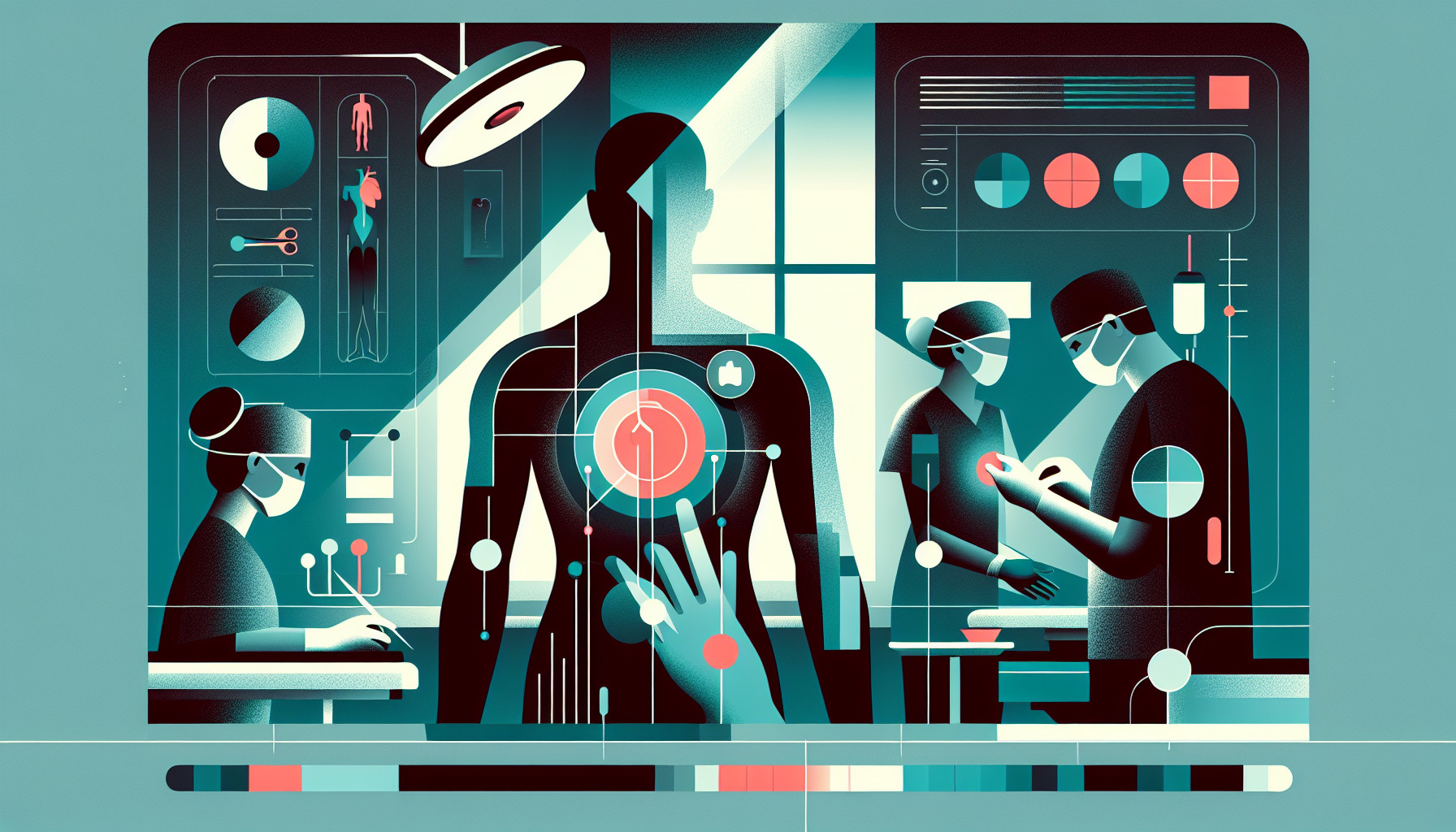Our Summary
This study explored the use of a specific type of MRI called dynamic contrast-enhanced MRI (DCE-MRI) to identify whether an anal fistula, a painful tunnel between the skin and the anus, is still active or healing after surgery. The researchers looked at 36 patients who had surgery for an anal fistula and used DCE-MRI to examine them. The patients were divided into groups based on whether their fistula was still active or in varying stages of healing.
The MRI technology measured different aspects of blood flow and tissue characteristics. The results showed that certain measurements were significantly different for patients with active fistulas compared to those in the healing stage, particularly within the first 75 days after surgery. This suggests that DCE-MRI could be a useful tool for determining whether a fistula is active or healing in the early postoperative period. However, this method didn’t distinguish between different stages of healing after 75 days.
FAQs
- What is the purpose of using dynamic contrast-enhanced MRI (DCE-MRI) in this study on anal fistula surgery?
- Can DCE-MRI distinguish between an active fistula and one that is healing in the early postoperative period?
- Can DCE-MRI distinguish between different stages of healing after 75 days post-surgery?
Doctor’s Tip
Therefore, it is important for patients to follow up with their doctor regularly after anal fistula surgery to monitor their healing progress. If there are any concerns or symptoms of a recurring fistula, be sure to discuss them with your healthcare provider. Additionally, following postoperative care instructions, such as keeping the surgical area clean and avoiding strenuous activities, can help promote proper healing and reduce the risk of complications.
Suitable For
Patients who are recommended anal fistula surgery are typically those who have recurrent or complex fistulas that do not respond to conservative treatments such as antibiotic therapy or drainage procedures. These patients may experience symptoms such as pain, swelling, discharge, and recurrent infections in the anal area. Surgery is often recommended to remove the fistula tract and promote healing.
In some cases, patients may also undergo surgery for anal fistulas that are causing complications such as abscess formation or fistula-related bowel issues. It is important for patients to consult with a healthcare provider to determine the best course of treatment for their specific condition.
Timeline
Before surgery:
- Patient experiences symptoms of anal fistula such as pain, swelling, discharge, and discomfort.
- Patient consults with a healthcare provider who diagnoses the anal fistula and recommends surgery.
- Patient undergoes preoperative tests and evaluations to determine candidacy for surgery.
After surgery:
- Patient undergoes anal fistula surgery, which may involve various techniques such as fistulotomy, fistulectomy, or placement of a seton.
- In the immediate postoperative period, patient may experience pain, swelling, and discomfort at the surgical site.
- Patient follows postoperative care instructions, which may include wound care, pain management, and dietary modifications.
- Patient attends follow-up appointments with healthcare provider to monitor healing and address any complications.
- Patient may undergo imaging tests such as DCE-MRI to assess the status of the anal fistula and determine if it is still active or healing.
- Based on the results of imaging tests and clinical assessments, healthcare provider may recommend further treatment or confirm successful healing of the anal fistula.
What to Ask Your Doctor
Some questions a patient should ask their doctor about anal fistula surgery and the use of DCE-MRI include:
- How will DCE-MRI be used to assess my anal fistula after surgery?
- What specific measurements will be taken during the DCE-MRI scan?
- How soon after surgery will the DCE-MRI scan be performed?
- What information will the DCE-MRI scan provide about the status of my anal fistula?
- How will the results of the DCE-MRI scan impact my postoperative care and treatment plan?
- Are there any risks or limitations associated with using DCE-MRI for assessing anal fistulas?
- Will I need to undergo additional imaging tests or procedures in combination with DCE-MRI?
- How frequently will I need to undergo DCE-MRI scans to monitor the healing of my anal fistula?
- What are the potential benefits of using DCE-MRI compared to other methods of assessing anal fistula healing?
- Are there any alternative approaches or technologies that could be considered for monitoring my anal fistula after surgery?
Reference
Authors: Lu W, Li X, Liang W, Chen K, Cao X, Zhou X, Wang Y, Huang B. Journal: BMC Med Imaging. 2024 Apr 1;24(1):76. doi: 10.1186/s12880-024-01257-w. PMID: 38561667
